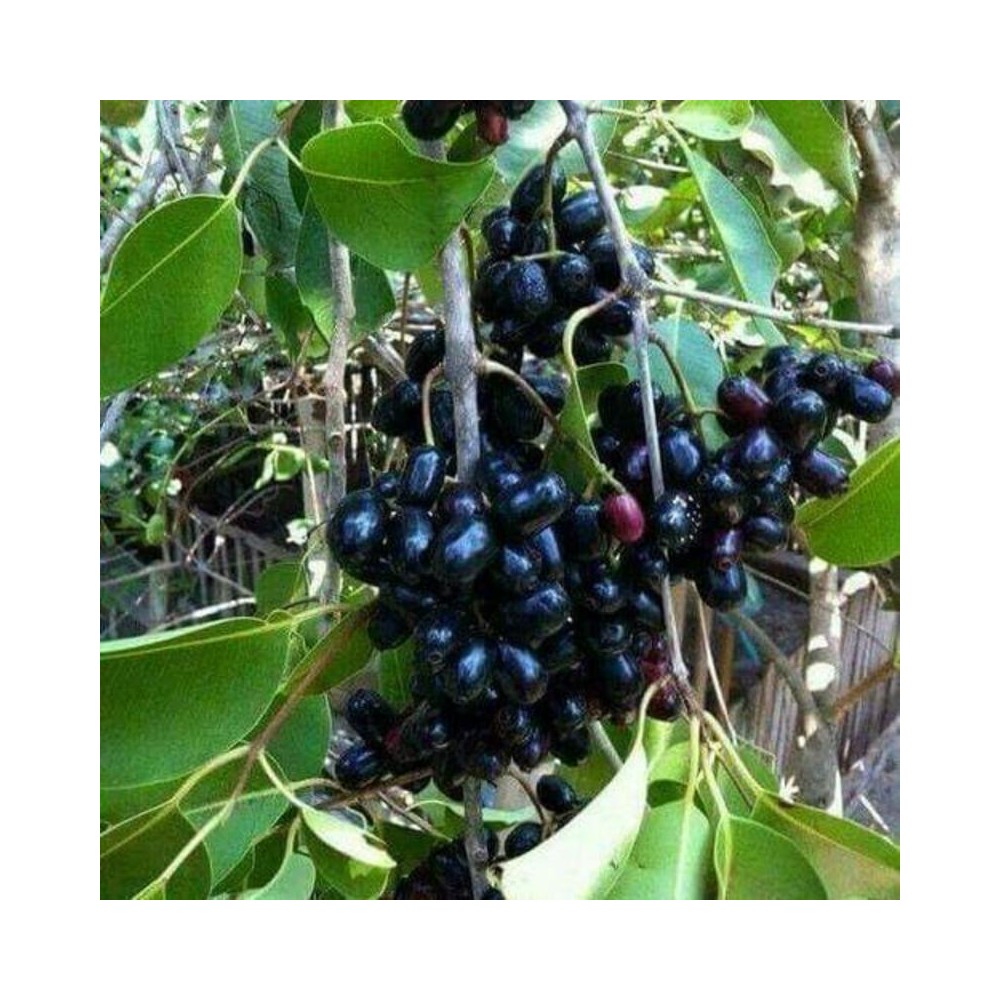



Jamun fruit (Syzygium samarangense or Eugenia javanica) goes by many common names, including wax apple, java apple, samarang rose apple and jumrool. Although rare in cultivation outside the tropics, they are sometimes grown as ornamental or fruiting trees in warmer climates where frosts are rare. Jambu fruit trees tolerate conditions under which few other fruit trees will survive. However, their fruit and handsome appearance will suffer if grown in poor, sandy soils.

Security policy visit http://nurserynature.com/content/10-security-policy

Shipping & Delivery Policy visit http://nurserynature.com/content/1-delivery

Cancellation & Refund Policy visit http://nurserynature.com/content/6-aeu-legal-revocation-terms
Jamun fruit (Syzygium samarangense or Eugenia javanica) goes by many common names, including wax apple, java apple, samarang rose apple and jumrool. Although rare in cultivation outside the tropics, they are sometimes grown as ornamental or fruiting trees in warmer climates where frosts are rare. Jambu fruit trees tolerate conditions under which few other fruit trees will survive. However, their fruit and handsome appearance will suffer if grown in poor, sandy soils.
Jamun Planting & Care
Jambu fruit trees vary greatly in height, from 16 to 50 feet. However, all feature a stout, 10- to 12-inch trunk and a spreading canopy like a large shrub. Their oblong, leathery leaves contrast nicely with their grayish-pink, flaky bark, giving them an ornamental appearance year-round. Panicles of pompom-like, light yellow flowers form in spring, each measuring 3/4 to 1 1/2 inches wide. If pollination occurs, the flowers later develop into pear-shaped fruit. The fruit starts out light green or creamy white, later ripening to a glossy, brownish-red color.
A native of the maritime regions of southeastern Asia, the jambu fruit tree is adapted to low-altitude tropical climates. It grows best within U.S. Department of Agriculture plant hardiness zones 10a to 11, where it will withstand minor cold snaps if covered. Gardeners in colder climates can grow jambu fruit plants in large containers for several seasons, overwintering them in a greenhouse or a warm, bright room indoors. However, they will eventually outgrow a container and need a more permanent situation to survive.
Jambu fruit plants grow best in full sun with moist, fertile soil. Poor soil reduces the quantity and quality of their fruit. Garden-grown trees require very little care apart from occasional watering and annual mulching, although potted jambu fruit plants benefit from twice monthly feeding with balanced, 15-15-15 analysis fertilizer to support their growth. One vital factor when growing jambu fruit plants is temperature. They need temperatures consistently above 60 degrees Fahrenheit to successfully fruit, which sometimes proves challenging in temperate climates. Pot cultivation allows for easier control over their growing conditions, as
well as easier access to their fruit during harvest.